Key Points:
- Starlink will only connect when customers are near their "registered service address" - but there are signs that SpaceX may be experimenting with a new roaming capability that eliminates this requirement.
- One Starlink customer, Marcus Tuck, has reported being able to get connected over 100 kilometers away from his registered service address!
- There is no guarantee that this is anything more than a limited experiment, but if roaming does pan out it makes Starlink a vastly more useful component of a mobile internet connectivity toolbox.
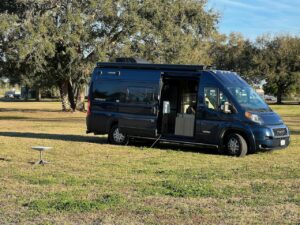
One of the biggest obstacles keeping many nomads from embracing SpaceX's Starlink satellite broadband service is that, up until now, Starlink will only connect when you are within around a dozen miles of your registered service address.
If you travel any further from "home" and try to connect, Starlink will just stare at the sky - perpetually "searching" and showing an "UnexpectedLocation" warning on the app debug screen.
But manually changing your service address is a hassle, and it is only possible if the new location you want to connect at has had Starlink service enabled - and if that area isn't already "at capacity".
Making things even worse for part-time nomads - if you do successfully move your Starlink service to a new location, there is no guarantee that you will be able to move it back to your home address if someone else has claimed your spot while you were gone.
If only Starlink supported some sort of roaming...
There is nothing official yet - but there are signs that SpaceX may be experimenting with at last making roaming possible!

Table of Contents
Starlink Roaming Video
Marcus Tuck Roams 100km In California
Overlander Marcus Tuck has become well known for chasing down open Starlink cells, and he has successfully managed to move his service address to 78 different locations as he journeyed across Canada, and he is up to 59 locations using a new USA-purchased Dishy while traveling across the United States. (Starlink systems can currently only be used in the country they were purchased in, so crossing from Canada to the USA required an entire new system.)
His current adventures have him exploring down Highway 395, in the gorgeous and remote Alabama Hills area of eastern California. And to his surprise - he has shared with us that he has been able to connect at several locations over the past two days, without needing to change his Starlink service address.
His most recent stop is a full 100km from his last registered service address - and he reports that he is able to get connected via Starlink at full speed with no unusual dropouts or signs of speed throttling.
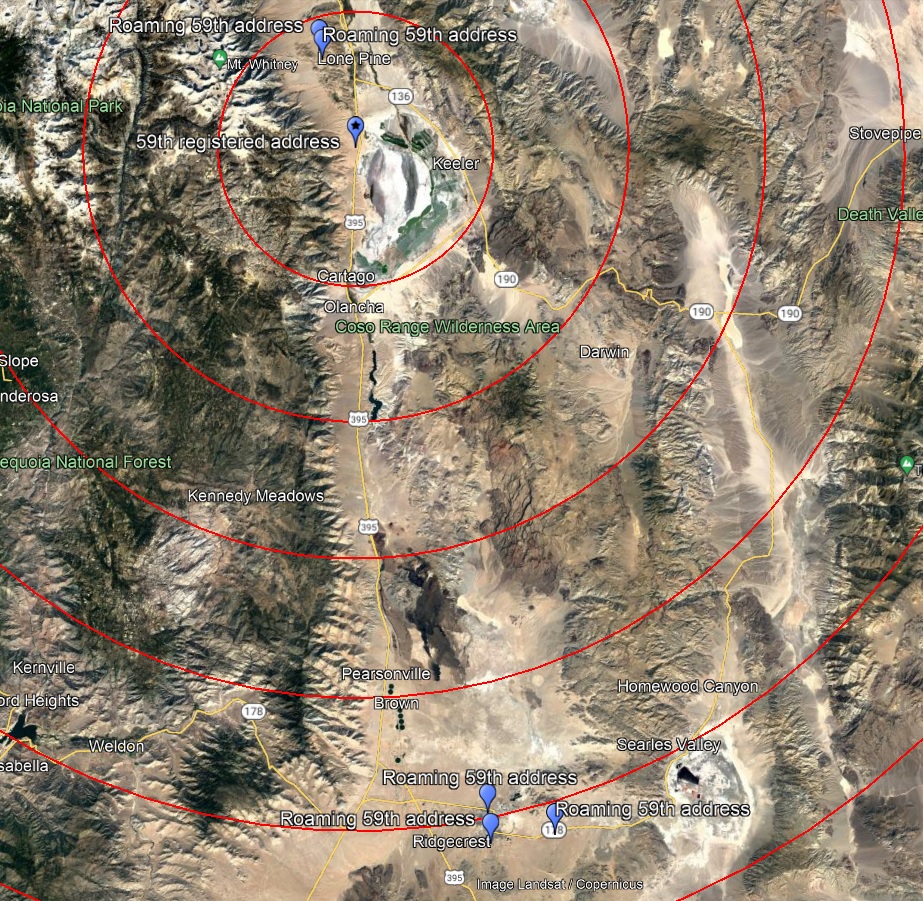
Marcus isn't the only one to notice the "Roaming = True" change in their Starlink debug logs.
Over the weekend a few other folks who have been pushing the distance limits from their service address (which usually results in slow performance and a lot of dropouts) reported that speeds and reliability had increased, and the roaming flag had flipped for them as well.
Are Starlink's geo-frustrations finally over?!
Sadly - it appears not.
Roaming Fails in Florida, Arizona
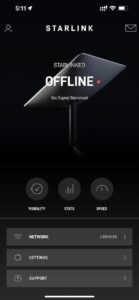
After comparing notes with Marcus yesterday, we immediately hopped in our van and set out to try and test out roaming for ourselves - driving 30 miles north of our current service address in Sanford, FL to an area in Daytona where we knew that Starlink service was active.
But no matter what we tried - our Dishy would not connect in this area, reporting only that it was "Searching" and revealing "UnexpectedLocation" on the debug screen.
We also compared notes with another Starlink owner in Arizona who was trying to connect 30 miles away from his service address, and who was also showing no signs of roaming.
It seems that roaming might have been turned on only in limited areas, or for a limited number of accounts.
Marcus tells us that he suspects that SpaceX might be doing some Starlink testing with the military at the Naval Air Weapons Station near China Lake, CA - which might explain why roaming has been turned on in the part of California he is exploring.
Only time will tell if roaming expands to more areas - we are eagerly keeping our radar up for signs that this is set to become a new Starlink feature, and not just an experiment.
We have reached out to Starlink for an official comment, but have not heard anything back yet.
But one member of the Starlink for Overlanders Facebook page did hear back from Starlink support:
"We still have not expanded service to your area as of yet nor have we expanded to a mobility/portability service as of yet but we are still working towards trying to offer the feature for our customers as well as perspective customers. We would like to mention it is a service we a closer to offering. With that being said we suggest reaching back out periodically to us to see if it has been rolled out. We also want to mention even with the portability / mobility service it is still contingent upon you being in a service area. If the area has not been activated the services still will not work."
SpaceX has never published a map of where Starlink service has been activated, so it appears that portability and roaming may remain limited until SpaceX has the capacity to turn on Starlink fully nationwide.
Roaming Is A Game Changer
We know many nomads who have been traveling with Starlink systems for a year, and who have only been able to successfully get connected a handful of times due to the difficulty in finding active service cells that are not already at capacity.
Some have given up, and have even canceled service or sold their Starlink gear.
But if SpaceX actually enables automatic and easy roaming across the entire country - suddenly Starlink is a MUCH more valuable complement to cellular internet options.
Will SpaceX do this?
As we've said since the beginning - Starlink roaming is technically possible, but there is no guarantee that SpaceX will enable it for everyone.
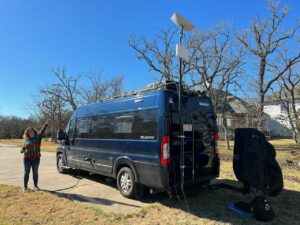
Allowing roaming means that SpaceX needs to hold back capacity to prevent roaming customers from causing congestion that degrades normal residential home service. So if SpaceX does move to enable roaming - they might impose roaming limits of some sort.
Perhaps there will be a roaming data usage limit, or a speed throttle.
Or they might charge extra to turn roaming on.
Or perhaps roaming will only be allowed into areas that are below a certain capacity limit.
Or maybe roaming will require the upcoming "mobile" Starlink system that is designed to work on vehicles, even while in motion.
Maybe Roaming may end up as a feature only offered to Starlink Premium customers, who will soon be paying $500 a month for faster speeds and priority access to the Starlink network.
Or maybe it will end up just working for everyone.
If SpaceX is now beginning to experiment - it might be that even they haven't decided exactly how roaming will eventually work out.
Stay tuned for updates as we wait for more field reports to determine just how widely roaming has been turned on, and if this change sticks around.
Further Reading
- Mobile Satellite Internet Options -
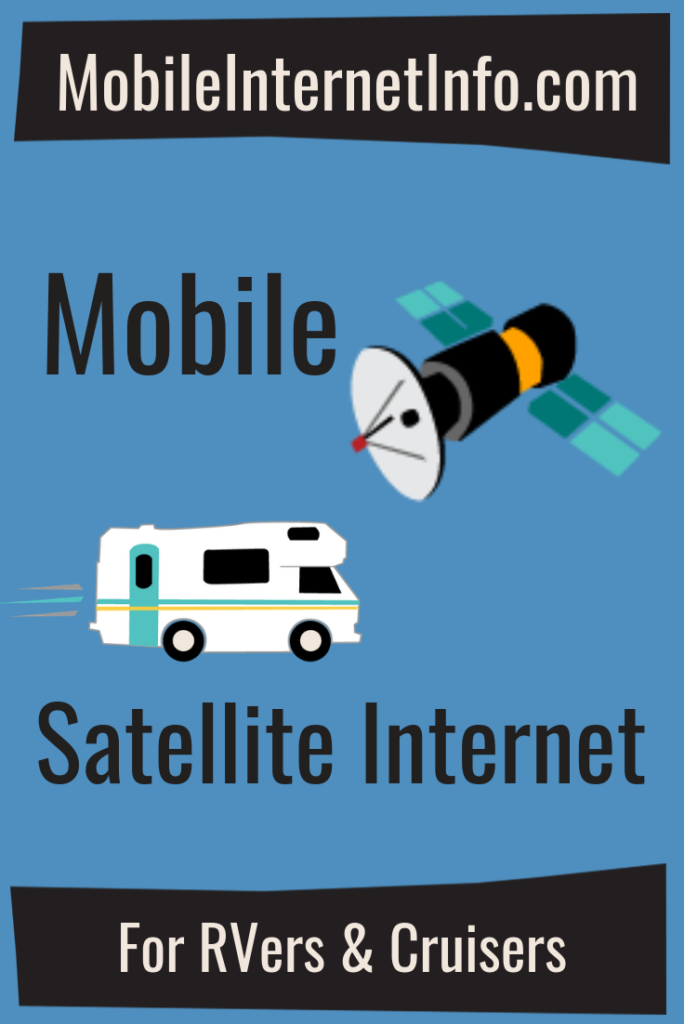 Our featured guide on all the current and future satellite internet options of interest to RVers and cruisers.
Our featured guide on all the current and future satellite internet options of interest to RVers and cruisers. - All of our Satellite Internet Resources - Our collection of guides, gear center entries, and news coverage on satellite internet.
And here is all of our recent Starlink coverage:
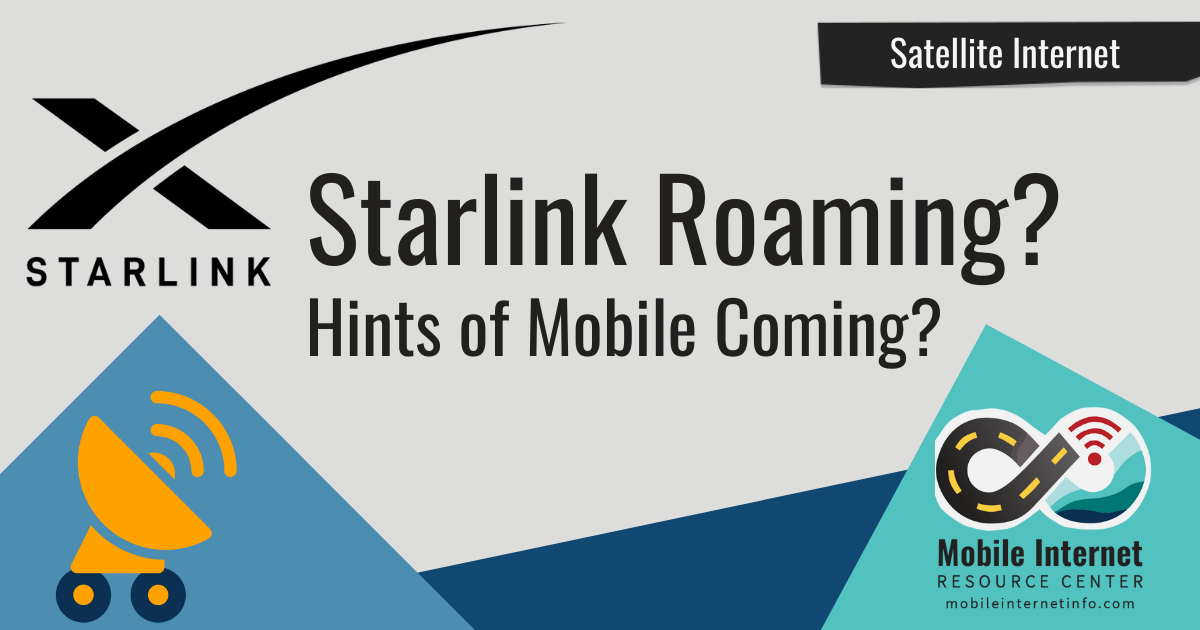







 Mobile Internet Resource Center (dba Two Steps Beyond LLC) is founded by Chris & Cherie of
Mobile Internet Resource Center (dba Two Steps Beyond LLC) is founded by Chris & Cherie of